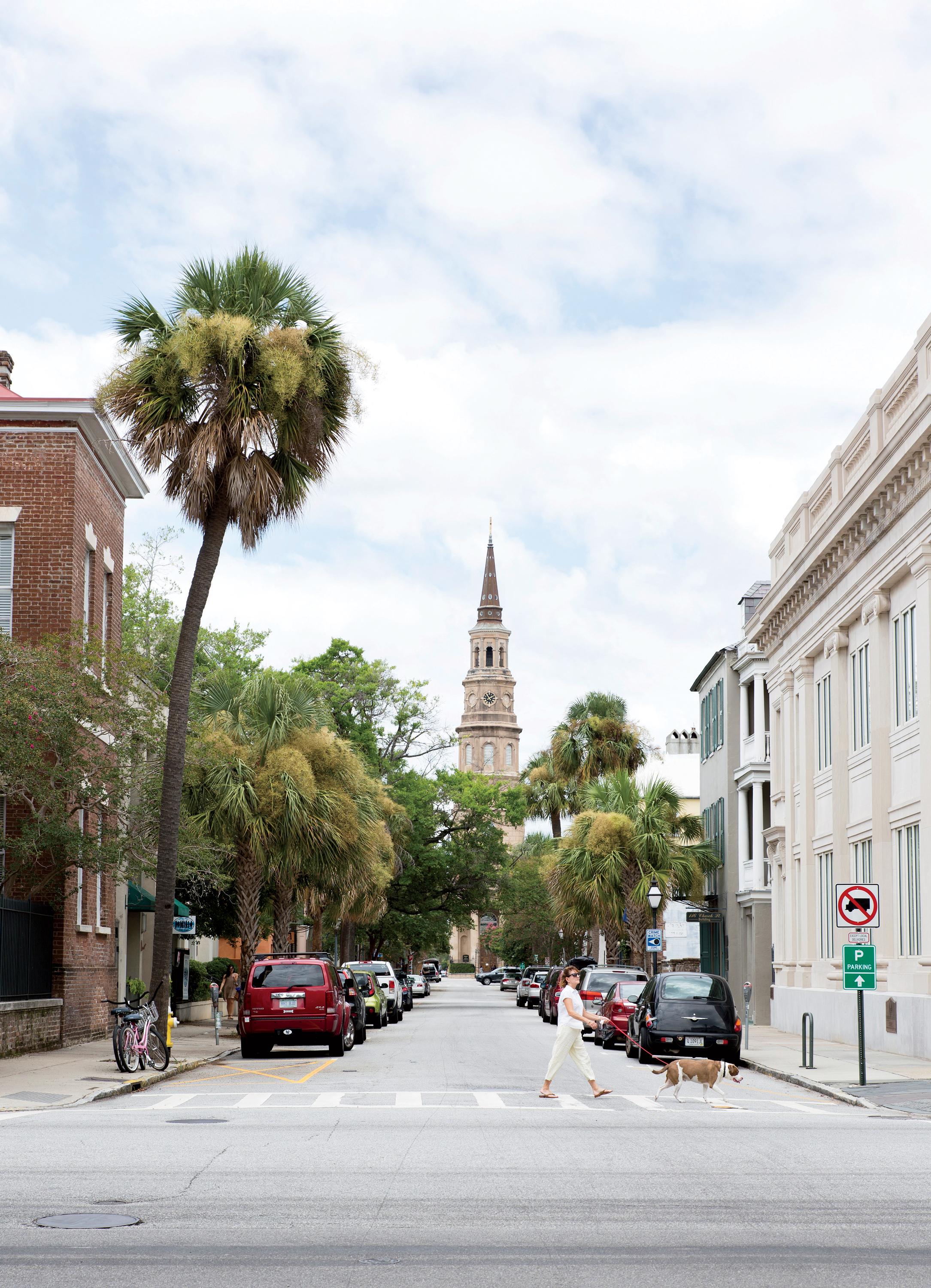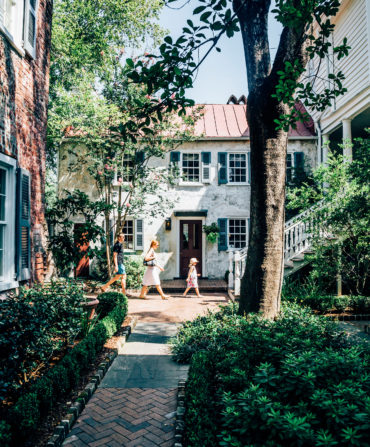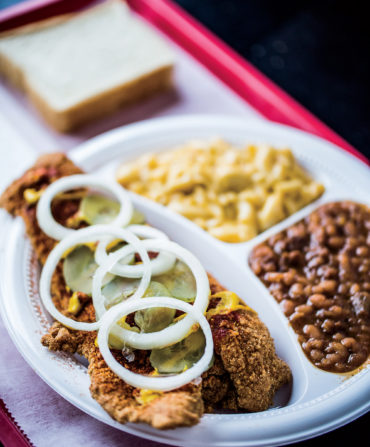The South's Best Food Towns
Charleston, South Carolina: Weekend Dining Guide
This Lowcountry city is still setting the bar for the Southern Food Revival
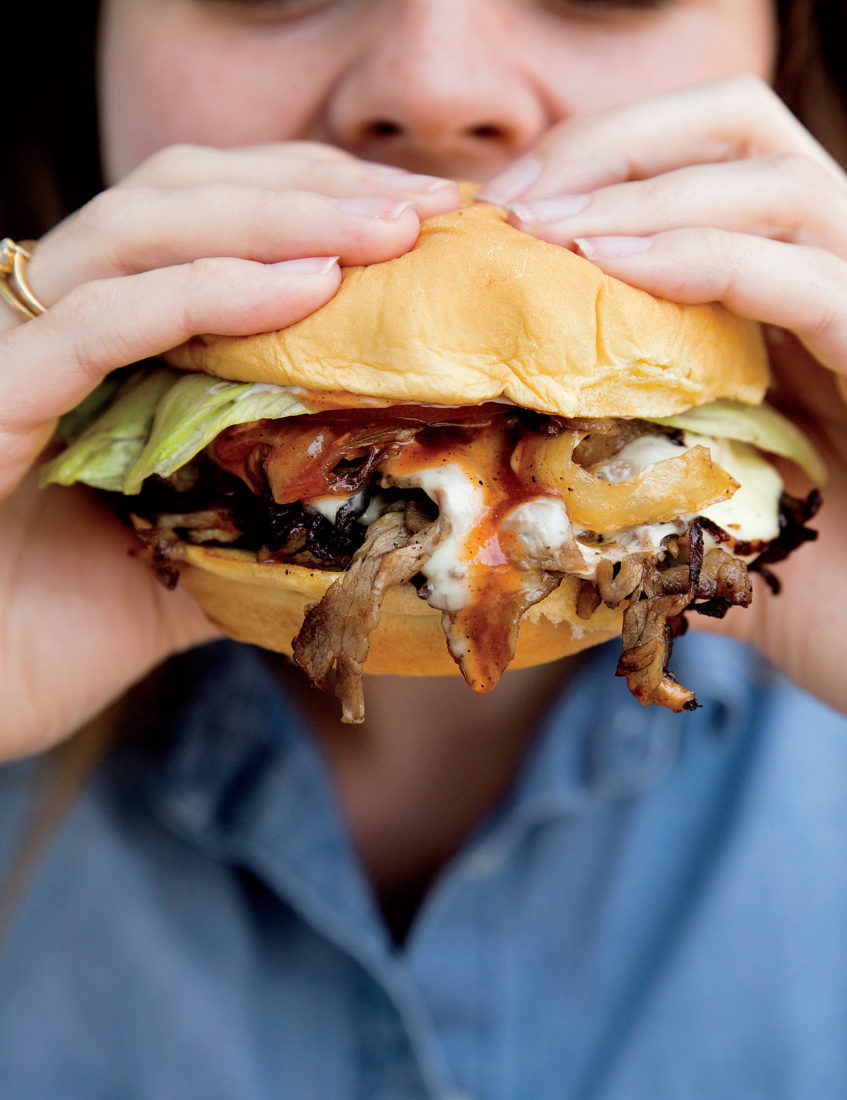
Photo: The rib-eye sandwich at Rodney Scott’s BBQ. | By Margaret Houston
Charleston, South Carolina is one of The South’s Best Food Towns, selected by the editors of Garden & Gun. See all of the cities here. Do you agree with our picks? Disagree? Have your say on Facebook orTwitter. #SouthernFoodTowns
Not so long ago, a young woman walked into a doctor’s office on the newly fashionable upper peninsula of Charleston, South Carolina, and approached the receptionist: “I have an eleven o’clock reservation,” she said. In Charleston right now, it’s easy to think the whole world is your raw oyster bar. Like politics in D.C., or film in Hollywood, dining in Charleston is the primary local source of work and pleasure, and the subject of endless speculation. The city comes by the obsession honestly—after all, the Lowcountry was built on rice, not cotton. But following a decade of national praise and attention—including four Best Chef: Southeast wins from the James Beard Awards, and the opening of Sean Brock’s Husk, which sparked a reboot of high-end Southern cuisine—it’s natural to wonder whether the scene remains vibrant. Judging by the influx of mouthwatering barbecue and the prevalence of pickled shrimp and benne seed okra salad, the answer is yes. More than ever.
FRIDAY
When Butcher & Bee opened in 2011, the sandwich shop became beloved for keeping late hours and serving a kale slaw with peanuts and benne that often sold out before noon. Butcher & Bee still serves that slaw, but now does so in its new NoMo (north Morrison) neighborhood digs: a legitimate sit-down dining room that interprets Israeli cuisine with a Southern accent. The results are most mellifluous in the morning, when the menu features Johns Island vegetables and almond butter, bedded in brown rice; baskets of Cynthia Wong’s inventive pastries; and hummus topped with a poached egg.
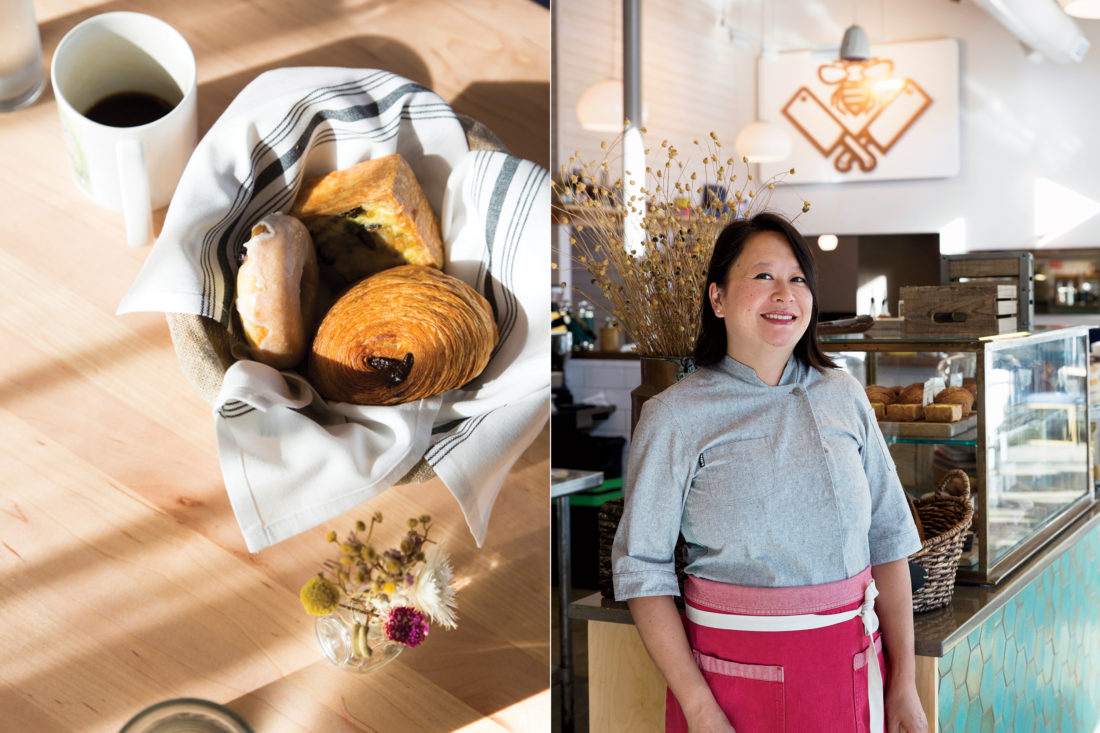
Photo: Margaret Houston
Assorted pastries at Butcher & Bee; Butcher & Bee pastry chef Cynthia Wong.
In the far upper end of downtown, visitors have also discovered the beauty of Hampton Park, appointed for strolling with its flower-fringed paths plotted by Frederick Law Olmsted’s son. Spending a few post-breakfast hours there positions you for a lunch of okra soup, fried pork chops, red rice, and lima beans at Bertha’s Kitchen, a soul-food institution recently named an America’s Classic by the James Beard Foundation. You might drop by the Gullah-influenced Nana’s Seafood & Soul for something sweet. There’s no more reliable source than Kenyatta McNeil’s luncheonette for Chilly Bears, the frozen Kool-Aid treats once sold by downtown confectioners, as well as the brown sugar bars known as Chewies.
Ready for a digestif? High Wire Distilling Company, a half mile or so away, produces one of the country’s more interesting riffs on Italian amaro, flavored by Charleston tea, Dancy tangerines, and yaupon holly; a taste comes free with an eight-dollar tour of the microdistillery. Owners Scott Blackwell and Ann Marshall collaborate frequently with Anson Mills, the company that helped revive Carolina Gold rice and Jimmy Red corn, so High Wire’s mash bills are rewardingly rich in heirloom grains.
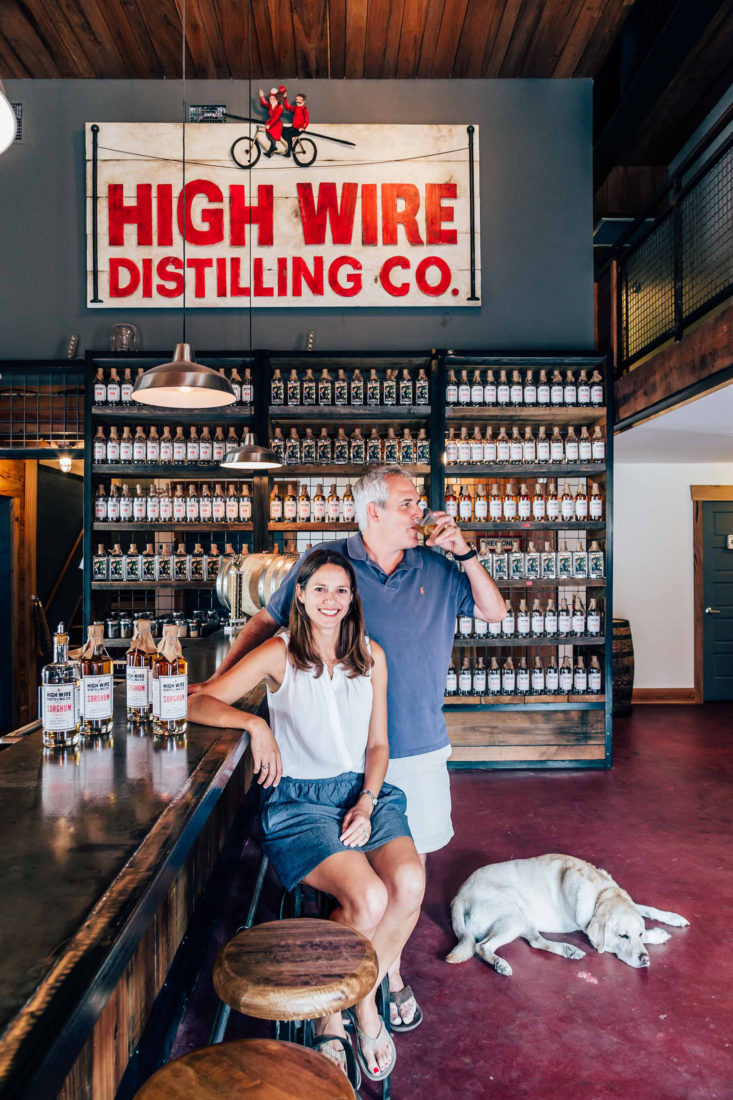
Photo: Peter Frank Edwards
Tasting at High Wire Distillery.
Keep the convivial spirit going at the French Quarter’s recently renovated Gibbes Museum of Art, which houses a nineteenth-century reproduction of a 1754 drawing entitled Mr. Peter Manigault and His Friends. Tuck away the image of colonial Charlestonians clutching goblets around a table: Although you’re unlikely to see anyone twirling his wig on his cane, the happy mood still epitomizes eating and drinking in the city. For irrefutable evidence, sip an old-fashioned in the Dewberry’s stunning midcentury-modern bar, where “rocks” means a massive hand-cut cube with a hand-stamped logo, as crisp as the bartenders’ white jackets.
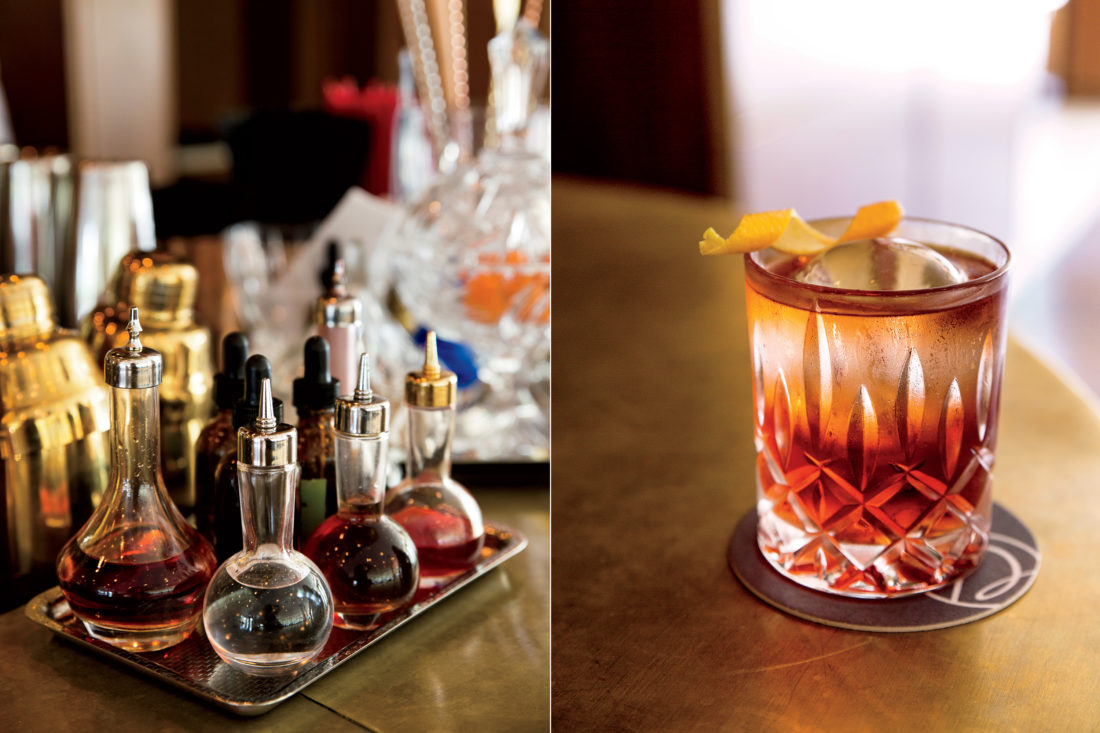
Photo: Margaret Houston
The bar at the Dewberry; a Negroni.
If you plan in advance, book a table (or snag bar seats) for dinner at FIG, the seasonal menu of which is universally adored. Otherwise, cross Marion Square, turn right toward the Grocery, and order the Lowcountry’s signature seafood pilau, a fine-tuned mess of Charleston Gold rice, field peas, fish, clams, and shrimp. For an unconventional after-dinner treat, leave room for the Tavern Burger at Little Jack’s Tavern, which lists the impeccable slider, topped with a meld of sunchoke relish and American cheese, as both an appetizer and a dessert.
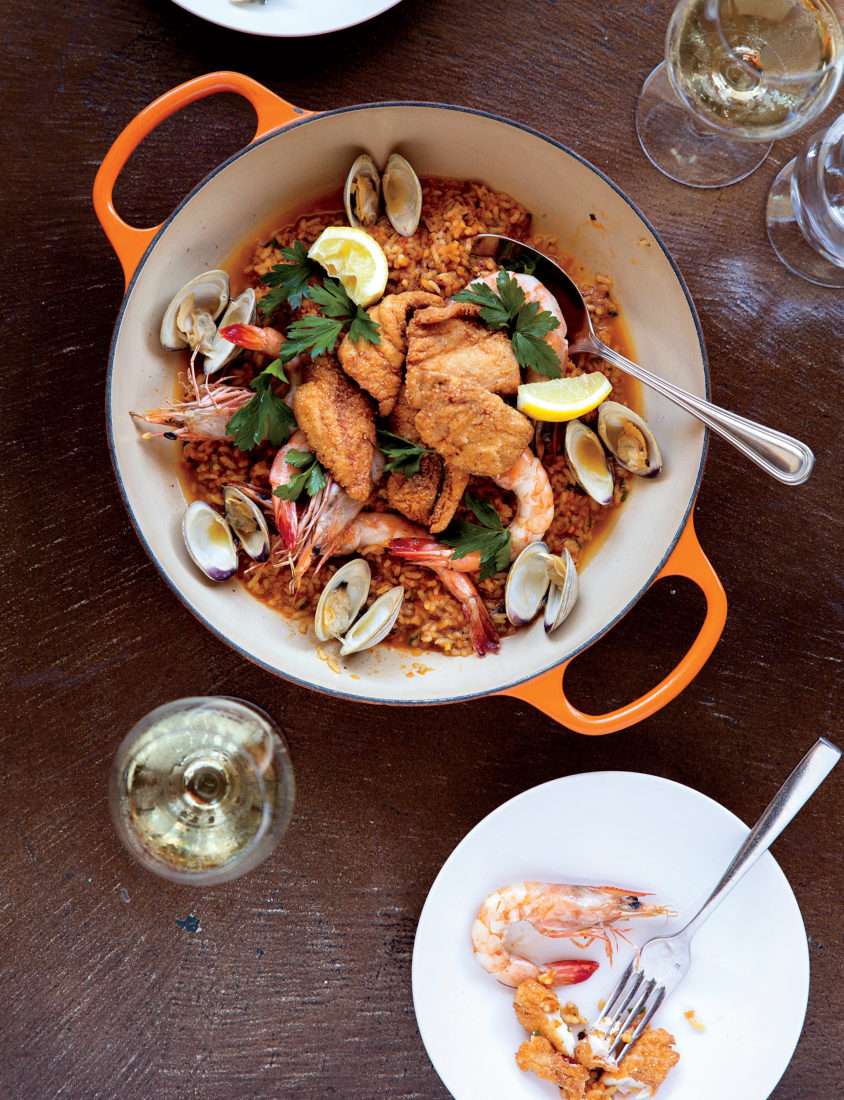
Photo: Margaret Houston
The Grocery’s seafood pilau.
SATURDAY
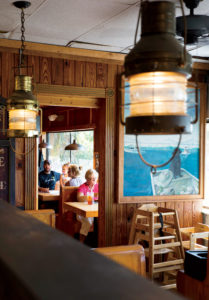
Photo: Margaret Houston
Marina Variety Store Restaurant.
Before Charlestonians filled the city’s waterways with pleasure boats and paddleboards, they worked them. A touch of that survives at the Marina Variety Store Restaurant. For more than fifty years, the Ashley River diner has drawn sailors and fishermen in search of strong coffee and fresh seafood: Try the Lowcountry hash browns, with plump grilled shrimp knitted into crispy potatoes and sweet onion bits.
From the marina, you could shoot over the bridge to the outskirts and spend the day touring and lunching at Middleton Place, one-time home to a signer of the Declaration of Independence that boasts the oldest landscaped gardens in America, as well as inclusive historical interpretations. The site honors the legacy of its former chef Edna Lewis with a menu that meanders from catfish stew to hoppin’ John. Staying in town, however, allows for an urban barbecue tour.
Part of the fun of barbecue is debating it, so it’s far from settled fact that Rodney Scott smokes the best whole hog in South Carolina and John Lewis smoked the best brisket in Texas. Now you can test those claims within a half-mile-square patch of Charleston. Don’t miss the sleepers: the rib-eye sandwich at Rodney Scott’s BBQ, and Lewis Barbecue’s corn pudding. Complete the circuit with the smoked wings at Home Team BBQ, one location of which is just down the block from Lewis.
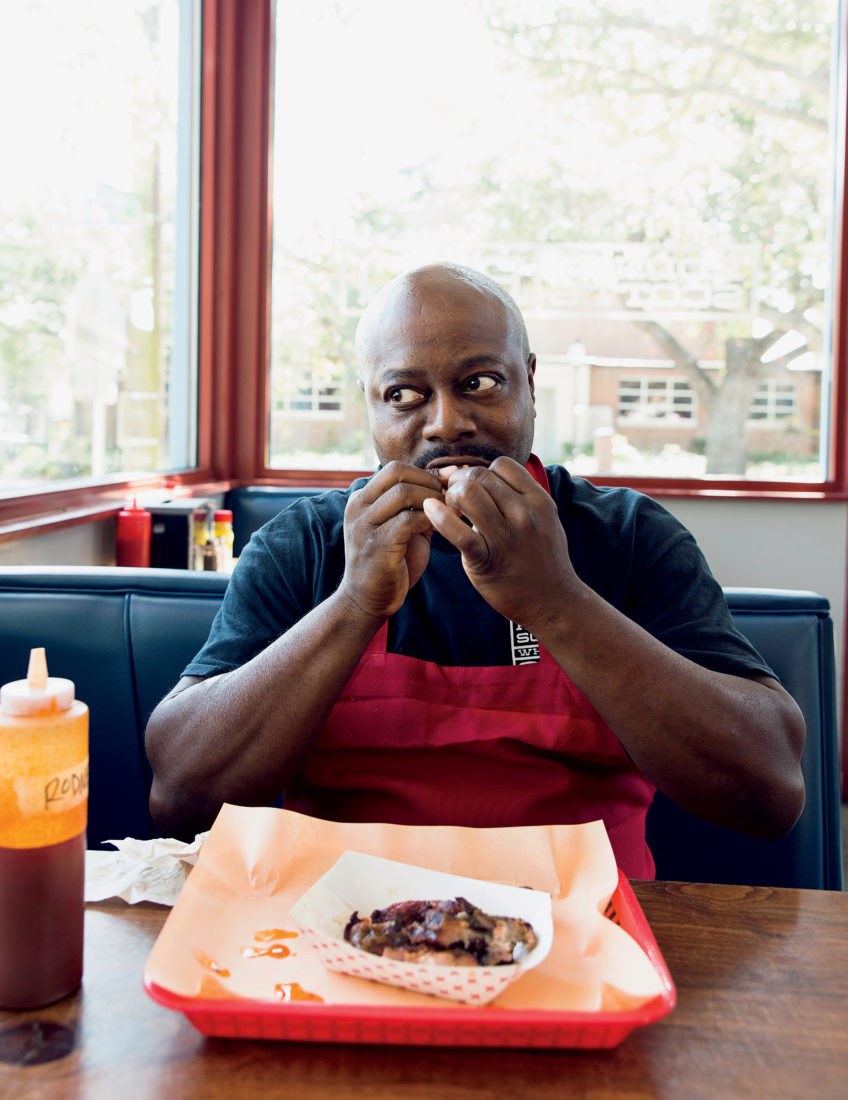
Photo: Margaret Houston
Pit master Rodney Scott.
To stave off drowsiness, order a cortado at Mercantile and Mash, where coffee virtuoso Michael Mai oversees the espresso machines. The market carries an array of local artisans’ products, such as Bulls Bay Saltworks red mash sea salt and Lowcountry Kettle pimento cheese potato chips. But when you’re ready for dinner, remember it’s oyster season, meaning Bowens Island Restaurant is a must. The creekside joint—another America’s Classic—serves up roasted clusters by the shovelful. On the opposite end of the elegance spectrum, Mike Lata’s crew at the Ordinary produces startlingly pristine ceviches and crudos, and breathtaking seared fish. Tonight, get the rice pudding.
SUNDAY
Husk has proliferated since Sean Brock first introduced his vision of a fully Southern restaurant, but the Charleston location still shines at brunch. To burn off the quail and johnnycakes, walk to the northwest corner of St. Michael’s Alley and Church Street: In that building, the formerly enslaved caterer Nat Fuller hosted an interracial reunification banquet near the Civil War’s end in 1865—another fine reminder of the role dining has played in Charleston.
